SUMMARY
This is AI generated summarization, which may have errors. For context, always refer to the full article.
![[ANALYSIS] The economics of vaccinating 70 million Filipinos](https://www.rappler.com/tachyon/2021/05/economics-vaccination-May-25-2021.jpeg)
Mass vaccination is doubtless necessary for the Philippine economy’s speedy recovery.
To this end, President Rodrigo Duterte and his pandemic response team originally (if ambitiously) aimed to vaccinate at least 70 million Filipinos by end of 2021.
Yet vaccination is proceeding at a snail’s pace.
As of May 25, only about 3.47 million Filipinos got their first dose (that’s 3.15% of the population) while only a little over 1 million (0.93%) have been fully vaccinated. At this rate, it might well take 2.2 years to reach 70 million – that’s around middle of 2023.
Realizing the impossibility of their original goal, Duterte’s vaccination team has moved their goalpost: now they’re aiming for 50-60 million people by November, and 70 million by December or early 2022. Instead of “herd immunity,” they’re now aiming for “population protection” (whatever that means).
How can we hasten vaccination? Economics lies at the heart of the problem, and let’s look at the supply of, and demand for, vaccines.
Supply of vaccines
As of May 20, about 8.3 million doses have arrived in the Philippines: two-thirds being the China-made Sinovac vaccines, the rest being the AstraZeneca, Pfizer, and Sputnik V vaccines. Next month, we’re expecting 12.2 million more doses.
These amounts are puny compared to what we need: to fully vaccinate at least 50 million Filipinos, we’ll need 100 million doses.
The main problem is that there’s just not enough vaccines to go around with globally, especially in poorer countries. Of the 1.77 billion doses so far administered worldwide, a whopping 85% went to high and upper-middle income countries. A pitiful 0.3% went to low income countries.
Covax is a global effort meant to redress this glaring, sickening – and according to the WHO director-general “scandalous” – vaccine inequality.
Rich countries would pitch in for the research and development of various vaccines. Once effective vaccines are found, these donors would be assured of supplies. At the same time, Covax buys vaccines in bulk and distributes discounted vaccines to 92 poor countries (including the Philippines) with no means to fund vaccine R&D.
The problem is that Covax came in too late: When it was formed in April 2020, many rich countries had already entered into bilateral deals directly with manufacturers. Although some rich countries still decided to join Covax, these rich countries would still be prioritized by the manufacturers.
Severely underfunded, Covax couldn’t buy enough vaccines for poor countries it wants to serve. They initially planned to distribute 2 billion doses worldwide this year, but so far, they’ve distributed a mere 68 million doses (3.4% of their target).
The Serum Institute of India manufactures the AstraZeneca vaccines and is a major supplier of Covax. But because of the horrible outbreaks in India of late, they reportedly won’t be exporting vaccines until October – dealing another huge blow to Covax.
With the Western vaccines being poured in the rich countries, it’s no wonder many developing countries have resorted to other vaccines, like the Chinese vaccines (by Sinovac and Sinopharm) and Sputnik V.
There are a number of ways to abate the global vaccine shortage.
First, rich countries ought to share their vaccine surpluses with poorer countries. In a recent poll, leading economists said this makes perfect economic sense. The US, for one, is estimated to have an excess of 300 million doses by July, and President Joe Biden has already committed 80 million doses for the rest of the world.
Second, vaccine production ought to be ramped up by, say, incentivizing manufacturers to set up factories in more countries, relaxing supply chain constraints, or waiving vaccine patents (although the last one has been met with fierce opposition from the pharmaceutical industry).
Already, manufacturers aspire to produce a mind-boggling 14 billion doses by end 2021. Let’s hope they meet that goal and Filipinos can substantially partake in that upcoming supply wave.
Demand for vaccines
It’s bad enough that the vaccines are in still short supply. Worse, lots of Filipinos are hesitating to get the jab.
A recent survey by the Social Weather Stations (SWS) showed that a full third of Filipino adults don’t want to be vaccinated (largely because of purported side effects and false stories of people dying), while 35% are uncertain about it.
Earlier, a Pulse Asia survey showed that as many as 6 in 10 Filipinos don’t want to get the jab – not so much because they fear that the vaccines may not be effective (only 7% said that) or that the vaccines are needless (6%), but that they may be unsafe (84%).
Even before the pandemic, vaccine hesitancy was already high in the country, thanks to the government-induced Dengvaxia scare a few years back. Vaccine fears then seem to have carried over today. (READ: Dengvaxia scare: How viral rumors caused outbreaks)
How best to dispel vaccine hesitancy?
For many people, mere lack of information may be the problem. The SWS survey I cited showed that adults with some college education are least likely to refuse the vaccines. Hence, at the very least, government must execute a well-designed information campaign telling people that all the vaccines are safe and will protect them from the worst effects of COVID-19, and that people need not be picky about brands.
Incentives and nudges might work, too. Some local government units and private companies are offering rewards for those who get vaccinated – mainly cash, but sometimes even turon and cows. Door-to-door campaigns (wherever safe to do so) might also help, apart from publicizing the vaccination of celebrities or local leaders.
But sheer information and incentives are not nearly enough. For many more people, it’s a matter of trust. Unfortunately, the present government isn’t exactly trustworthy.
To begin with, Duterte’s very own vaccination on May 3 continues to be shrouded in mystery. Why did it take him so long? Why did he choose the Sinopharm vaccine, which at the time, didn’t even have emergency use authorization from the Food and Drug Administration? Did he take an illegal vaccine?
More worrisome, Duterte’s directive to local government units to conceal the brand of vaccines has only raised eyebrows even more. Sure, all vaccines are safe and effective, but people have the right to know what exactly is being injected into their bodies. You can’t take that away from them.
For those who are choosy, maybe the solution is to simply bring in more vaccines – both in terms of quantity and type. But this brings us back to global supply issues. Hopefully, the global shortage will soon be abated as supplies are freed up in rich countries.
In the meantime, lots more people (including myself) aren’t actually choosy. We’d take any vaccine out there. We just happen to be lower on the priority list.
With time running out fast, government might want to open up the vaccines for us, too – and just set up priority lanes for health frontliners, seniors, and those with comorbidities. Government seems to be moving in this direction.
In the end, the country’s vaccination program hinges on ramping up both supply and demand. Sure, the global supply is chiefly out of Duterte’s hands. But his vaccine distribution is way too slow, and he hasn’t yet significantly brought down hesitancy.
Maybe the May 2022 polls hold the key for a major acceleration of vaccination in the country. – Rappler.com
JC Punongbayan is a PhD candidate and teaching fellow at the UP School of Economics. His views are independent of the views of his affiliations. Follow JC on Twitter (@jcpunongbayan) and Usapang Econ (usapangecon.com).
Add a comment
How does this make you feel?
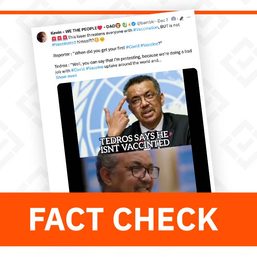
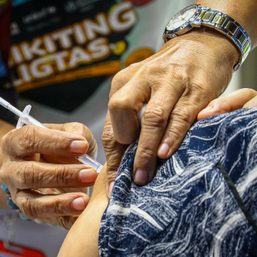
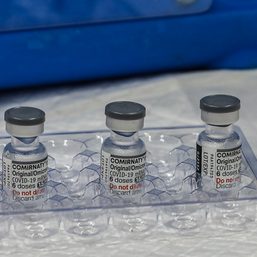
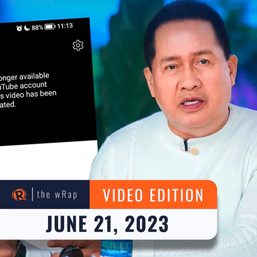
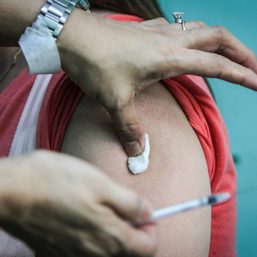
![[In This Economy] A counter-rejoinder in the economic charter change debate](https://www.rappler.com/tachyon/2024/04/TL-counter-rejoinder-apr-20-2024.jpg?resize=257%2C257&crop=267px%2C0px%2C720px%2C720px)
![[Vantage Point] Joey Salceda says 8% GDP growth attainable](https://www.rappler.com/tachyon/2024/04/tl-salceda-gdp-growth-04192024.jpg?resize=257%2C257&crop_strategy=attention)
![[ANALYSIS] A new advocacy in race to financial literacy](https://www.rappler.com/tachyon/2024/04/advocacy-race-financial-literacy-April-19-2024.jpg?resize=257%2C257&crop_strategy=attention)


There are no comments yet. Add your comment to start the conversation.